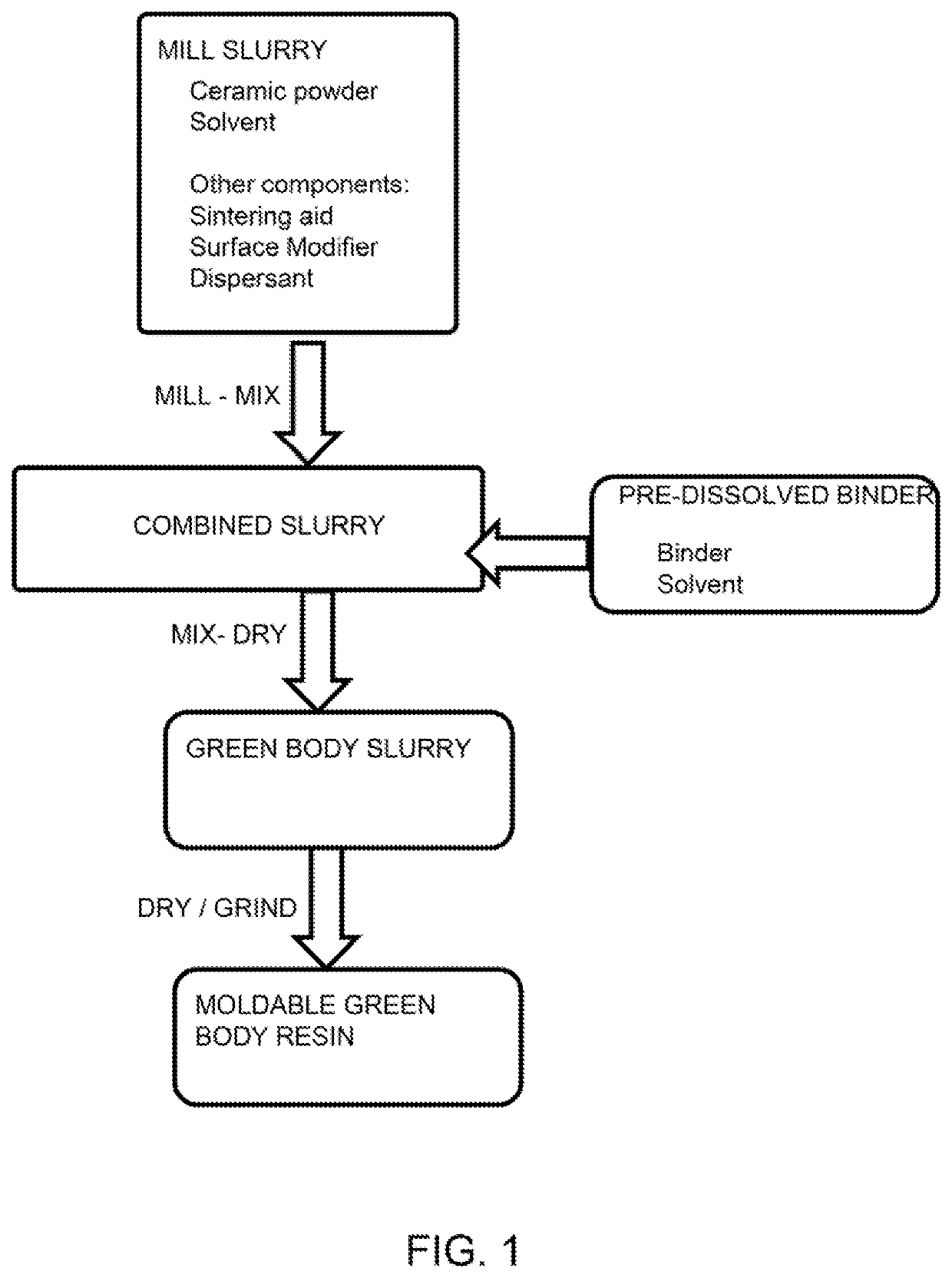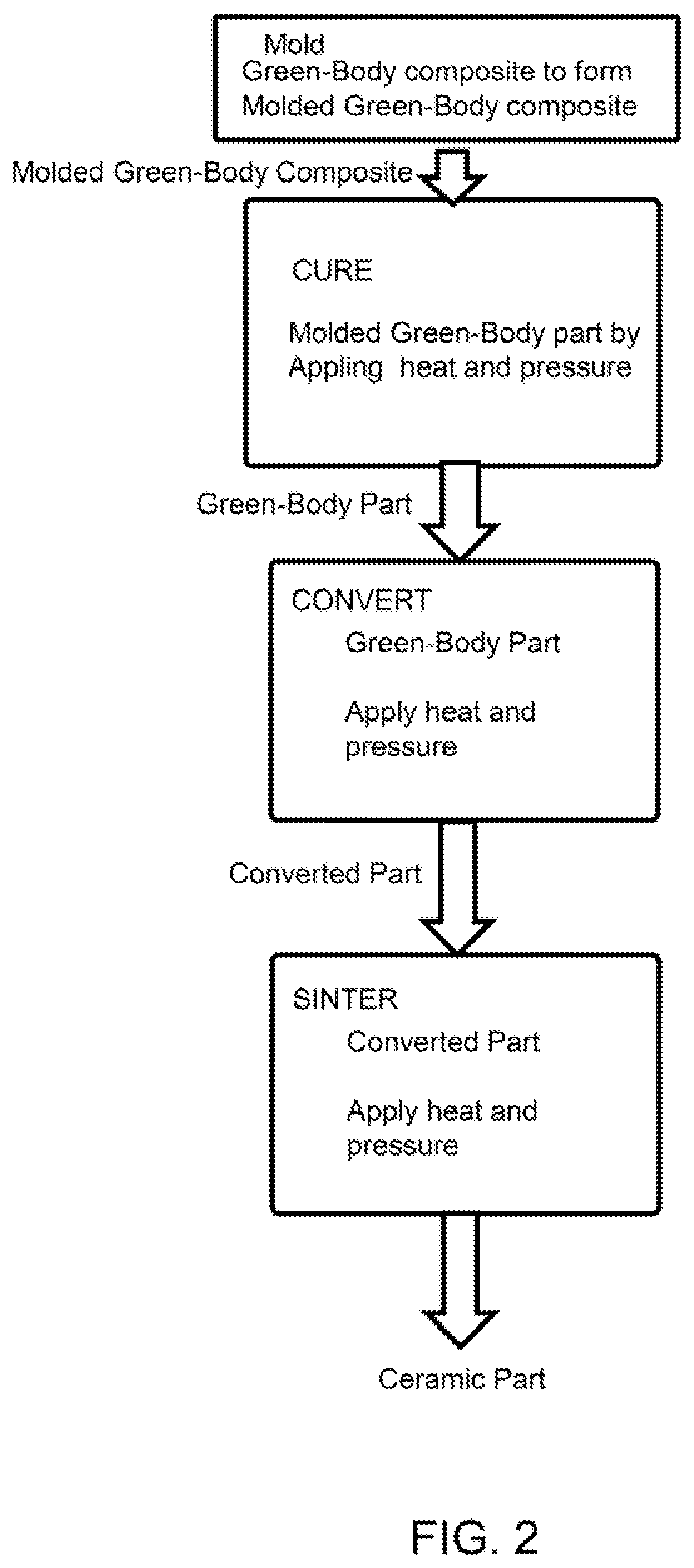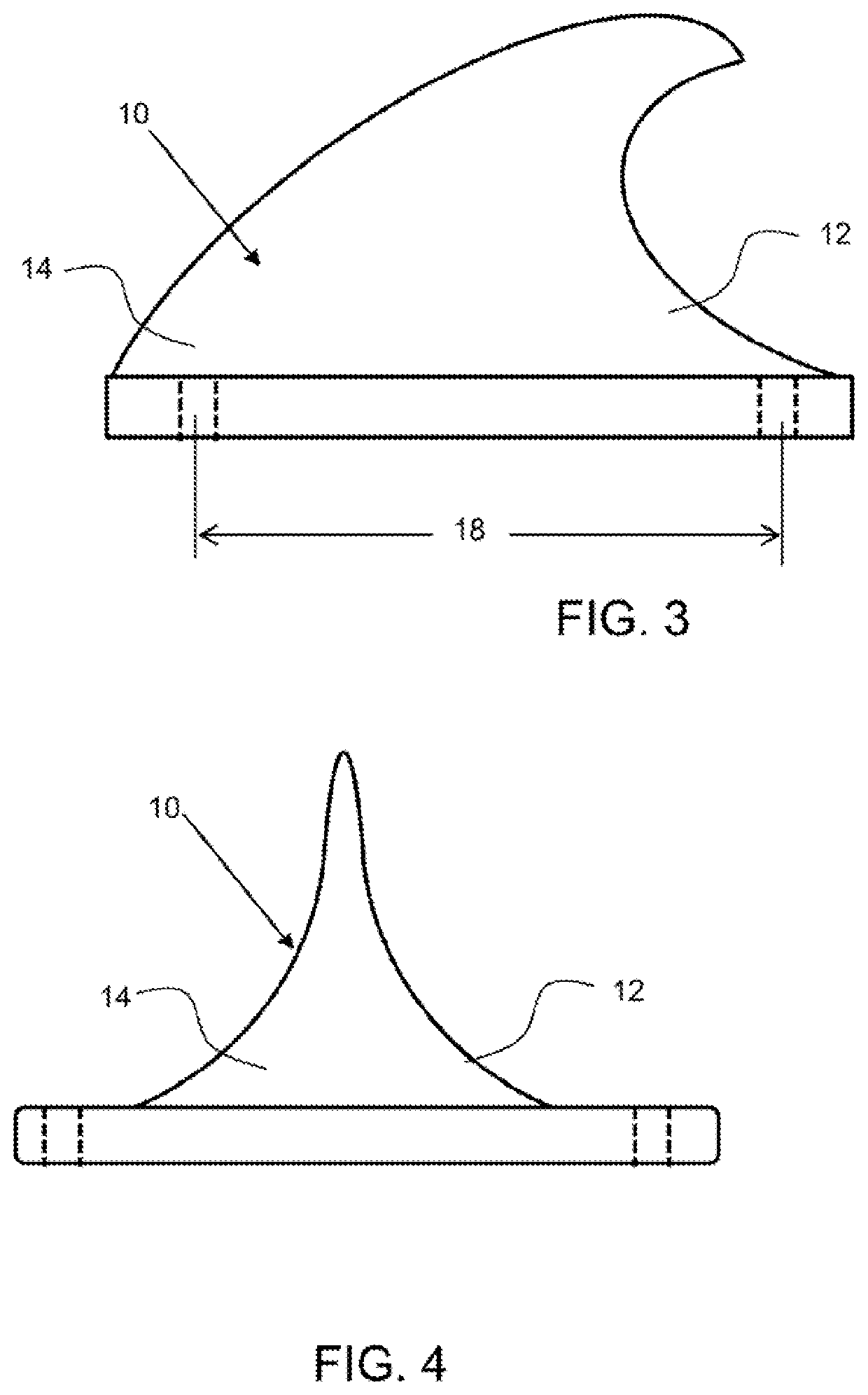Moldable silicon nitride green-body composite and reduced density silicon nitride ceramic process
a technology of green-body composite and silicon nitride, which is applied in the field of moldable silicon nitride green-body composite and reduced density silicon nitride ceramic process, can solve the problems of undesirable reaction layer formation, difficult control and expensive process, and inability to achieve the desired dielectric properties, and achieve easy flow into molds, promote reaction and cross-linking, and enhance particle dispersion
- Summary
- Abstract
- Description
- Claims
- Application Information
AI Technical Summary
Benefits of technology
Problems solved by technology
Method used
Image
Examples
example
[0044]An exemplary moldable green-body composite was made according to the present invention with the composition as described in Table 1. The concentration of the silicon nitride was about 82% by weight. The concentration of the binder was about 15% by weight and the concentration of surface modifier, methyltriethoxysilane. (MTES) of about 1% by weight. Anti-agglomeration agent, stearic acid is included in a concentration of about 0.18% by weight. The sintering aids are include in a combined concentration of about 2% by weight.
[0045]
TABLE 1Mass% ofComponent(g)TotalSi3N430082Al2O33.10.88Y2O34.31.18Binder5414.77MTES30.82Stearic acid1.20.33
PUM
| Property | Measurement | Unit |
|---|---|---|
| Temperature | aaaaa | aaaaa |
| Percent by mass | aaaaa | aaaaa |
| Percent by mass | aaaaa | aaaaa |
Abstract
Description
Claims
Application Information
 Login to View More
Login to View More - R&D
- Intellectual Property
- Life Sciences
- Materials
- Tech Scout
- Unparalleled Data Quality
- Higher Quality Content
- 60% Fewer Hallucinations
Browse by: Latest US Patents, China's latest patents, Technical Efficacy Thesaurus, Application Domain, Technology Topic, Popular Technical Reports.
© 2025 PatSnap. All rights reserved.Legal|Privacy policy|Modern Slavery Act Transparency Statement|Sitemap|About US| Contact US: help@patsnap.com



